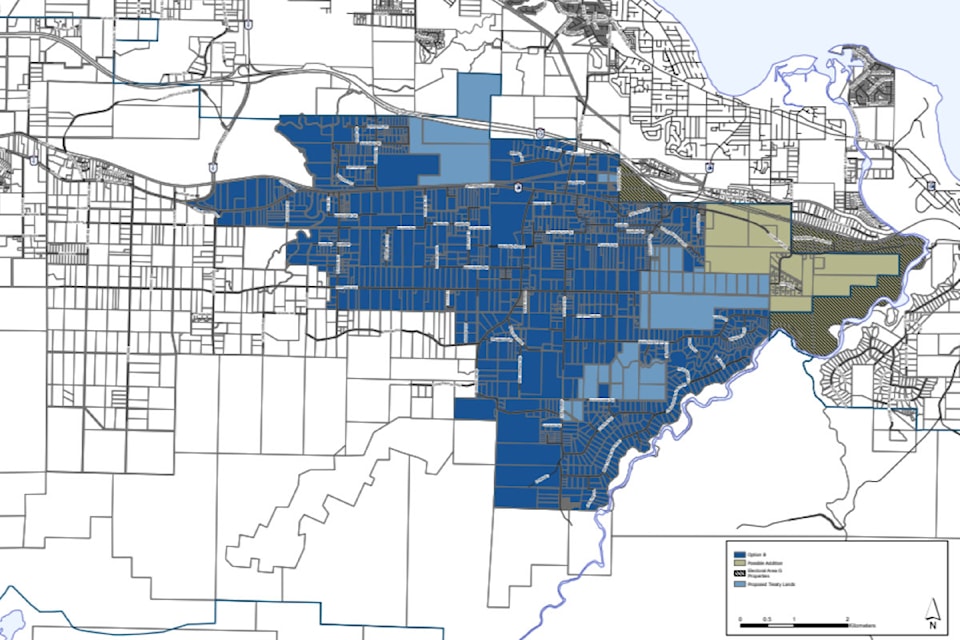Residents in the Errington and Coombs areas have shown some desire to become part of a new municipality.
Located in Electoral Area F, which encompasses Coombs, Hilliers, Errington, Whiskey Creek and Meadowood, the groundwork has been laid out in advancing their goal to become incorporated, with the completion of a boundary study that was presented at the Regional District of Nanaimo board meeting on July 22.
Prior to the boundary study, the RDN first conducted a governance study from 2022 to 2023. A report of that was presented at the RDN board's meeting on May 9, 2023, by committee chair David Karras, and consultants Allan Neilson of Neilson Strategies and Sherry Hurst of Leftside Partners Inc. The RDN board at the time endorsed the study and recommended to the province the next stage of the process be funded and undertaken, which is an incorporation study.
The Ministry of Housing and Municipal Affairs, however, suggested a boundary study for Electoral Area F be held first. Neilson Strategies and Leftside Partners were again commissioned to do the study which started in late 2024 and completed in 2025.
The results of the boundary study were presented and received by the RDN board.
The process of the study, Nielson said, include a technical component and results from a variety of public engagements, surveys and open houses from residents, who took the opportunity to express their views and provide feedback. They gave their input on boundary options prepared by the consultants as well as support for an incorporation study.
Option A is the smallest of the three options centering around the Errington area. The population, based on 2021 consensus is 2,760. It has the highest proportion of non-residential tax base, approximately 25 per cent, out of the three options. It also includes 17 farm class properties.
Option B combines much of the Errington and Coombs areas, with a population of 4,234. Non-residential tax base proportion is 22 per cent, it includes all of Highway 4A and has 32 farm class properties.
Option C is the largest as it includes much of Errington, Coombs, Hilliers and Whiskey Creek. The combined population is 5,527, which would mean local policing costs would cost three times what they are now. The non-residential tax base proportion is 19 per cent and has 57 farm class properties.
Out of 195 comment cards provided to residents, 38 per cent selected Option C, 21 per cent Option B and 22 per cent Option A. There was 19 per cent that indicated none even when that option was not given. Seventy-five per cent of the respondents using the comment cards support the next step, incorporation study.
The survey showed 55 per cent are from Errington and 23 per cent are from Coombs. Option B was the most popular for Erringtonians while Option C was highly favoured by Coombs residents.
Among the feedback received include significant interest in an inclusive approach that allowed everyone to benefit from a different form of governance. Some also preferred to contain any changes to the smallest boundary possible, or not to proceed at all. There is interest in a smaller option from residents from Errington and Coombs.
The consultants recommended Option B, the Errington and Coombs area, as it presents less cost for a new municipality and its taxpayers. Neilson cited there is decent local road network for the area that will not burden the municipality with heavy costs. As well, the combined population of both areas would be approximately 4,400 which will allow the municipality to build-up reserves for future policing costs, should the population hit the 5,000 mark.
Both areas, Neilson said, include residents keen in engaging in a future incorporation study as well as prefer to maintain a rural setting.
Neilson said they have also identified some areas in Electoral Area G (French Creek, San Pareil, Little Qualicum, Englishman River) that may be added or considered for inclusion pending discussions with owners of the properties.
The RDN board unanimously endorsed the consultant's recommendation and will send the report and a letter to the Ministry of Housing and Municipal Affairs requesting approval and funding of an incorporation study, using boundary Option B in the study to be applied as the main focus of the incorporation study.
They also request the study to be completed in time to hold a referendum during the 2026 municipal elections.



